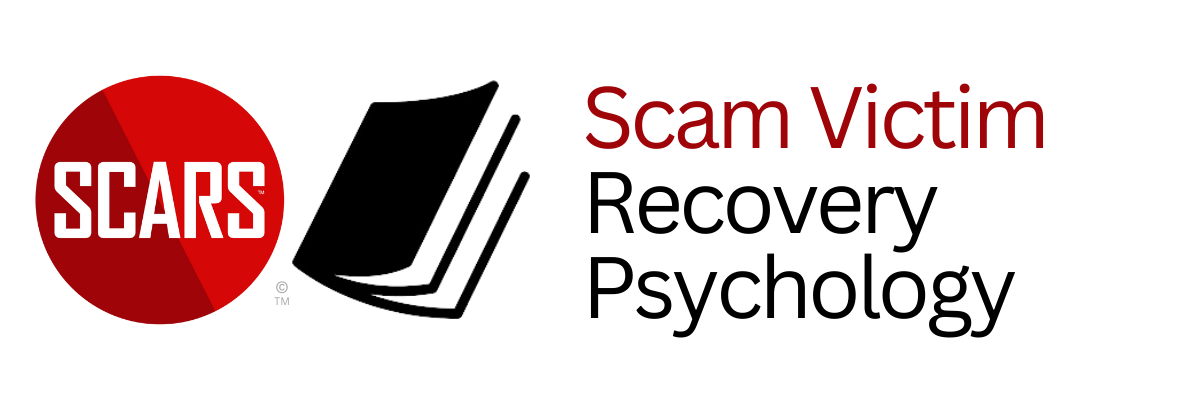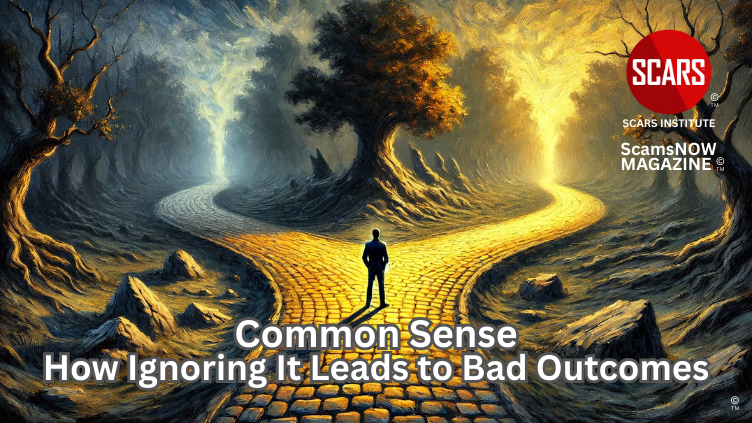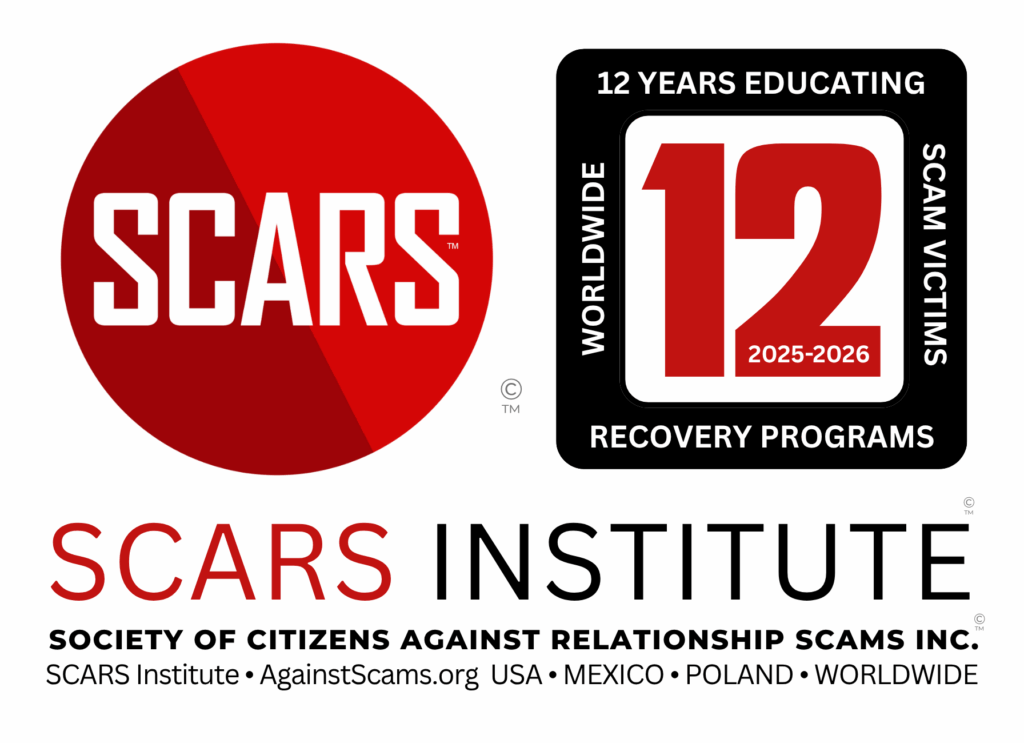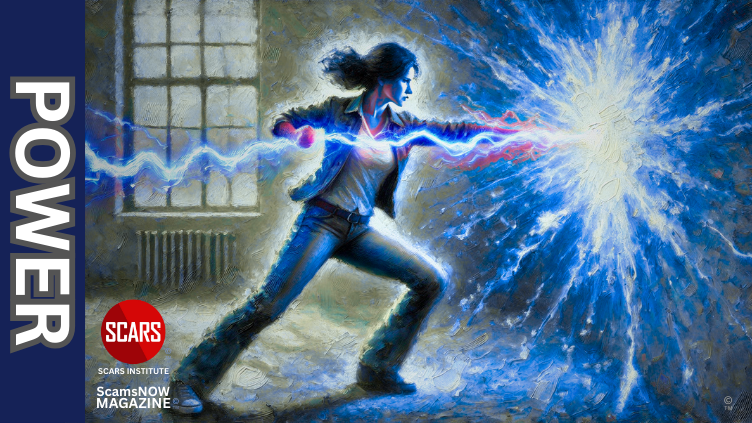Glimmers of Light – the Positive Side of Experience for Scam Victims
Finding Light in Small Moments: How Glimmers Can Support Scam Victim Recovery
Primary Category: Scam Victim Recovery Psychology
Intended Audience: Scam Victims-Survivors / Family & Friends / General Public / Others
Authors:
• Vianey Gonzalez B.Sc(Psych) – Licensed Psychologist, Specialty in Crime Victim Trauma Therapy, Neuropsychologist, Certified Deception Professional, Psychology Advisory Panel & Director of the Society of Citizens Against Relationship Scams Inc.
• Tim McGuinness, Ph.D. – Anthropologist, Scientist, Director of the Society of Citizens Against Relationship Scams Inc. [Chubasco]
About This Article
After experiencing the betrayal and emotional devastation of a relationship scam, many victims find themselves trapped in cycles of shame, hypervigilance, and emotional numbness. But within this painful landscape, there exists a quiet path to healing—through what therapist Deb Dana calls glimmers. These are small, positive moments that offer the nervous system a sense of safety, peace, or connection. While they don’t erase the trauma, glimmers provide brief but powerful reminders that not every moment is defined by fear or grief. They may come in the form of a kind gesture, a warm breeze, a favorite song, or simply the awareness of your own steady breath.
By learning to notice, appreciate, and cultivate these moments, you can begin to rewire your nervous system away from survival mode and toward healing. Glimmers help you reclaim your emotional life, one breath at a time. They affirm that joy is still possible—even if fleeting—and that your capacity to feel safe, loved, and whole is not gone, only waiting to be rediscovered. Healing is not always about grand breakthroughs. Sometimes it’s found in the quiet return of ease, the softening of the heart, and the decision to let in a little light—even when everything feels dark.

Finding Light in Small Moments: How Glimmers Can Support Scam Victim Recovery
In the aftermath of a relationship scam, the emotional landscape can feel desolate. Trust has been broken. Shame lingers. Fear becomes a familiar companion. You may find yourself on high alert, scanning for danger, replaying memories, and questioning every decision. This is the impact of trauma. But healing doesn’t only come from addressing what hurt you. It also comes from noticing what helps you. That is where glimmers come in.
What Are Glimmers?
The word “glimmers” was introduced by therapist Deb Dana as part of her work with polyvagal theory. In simple terms, glimmers are small, positive moments that help your nervous system feel safe, connected, and regulated. They are the opposite of triggers, which activate fear, anxiety, or dysregulation. Glimmers are not dramatic or overwhelming. They are quiet signals that your body is okay, your environment is safe, and you are capable of healing.
You might not have known to look for glimmers, especially if your recent experience was marked by deception and trauma. But they are there, waiting to be noticed: the warmth of a morning sunbeam, the sound of a favorite song, the feeling of someone listening without judgment. Glimmers are often simple, but they are powerful. They begin to gently shift your focus away from what broke you and toward what can help restore you.
Why Glimmers Matter in Recovery
When you’ve been scammed, especially in a romantic context, your nervous system becomes dysregulated. The betrayal affects more than just your thoughts; it impacts your body’s sense of safety. Many victims feel jumpy, anxious, numb, or shut down. Even after the scam ends, your body may still react as if you are in danger.
Glimmers help rewire that response. By teaching your nervous system to recognize safety again, they allow you to come out of survival mode and re-enter life with more balance and presence. These moments remind you that while danger existed, it no longer defines every second of your life. Healing requires more than avoiding triggers. It requires seeking out and fully experiencing moments of peace.
How to Recognize Glimmers
Glimmers are not always obvious. You have to train yourself to see them, especially if you’ve been stuck in a state of vigilance or emotional pain. The first step is to slow down and notice what feels good—even for a second. Ask yourself:
- What brings me a sense of calm, even briefly?
- When do I feel most grounded or connected?
- What moments make me smile or soften?
These don’t have to be big moments. In fact, the smaller they are, the better. Glimmers can be:
- The quiet comfort of a warm cup of tea
- The rustling of leaves in the wind
- A stranger holding the door open for you
- The steady rhythm of your own breath
- A line in a book that speaks to your heart
The goal is not to manufacture happiness. It is to recognize when your nervous system naturally shifts toward regulation. That shift, even if fleeting, is your glimmer.
How to Cultivate More Glimmers
Once you learn to recognize glimmers, you can begin to create conditions that make them more likely to occur. This is not about forcing joy or pretending you aren’t hurt. It’s about making space for small experiences that support your healing.
Create a Glimmer List Start by identifying what feels good to you. Make a list of activities, places, people, or moments that reliably bring you a sense of ease. Keep this list visible. When you’re overwhelmed or disconnected, try one of those things.
Set the Stage Design your environment to support calm. Light a candle. Open the windows. Play soft music. Reduce noise and clutter where you can. Create moments of sensory comfort throughout your day.
Practice Presence Glimmers happen in the present moment. Mindfulness exercises can help you stay connected to what you’re experiencing now, instead of dwelling on the past or fearing the future. Start small: focus on how your feet feel on the ground, or listen closely to the sounds around you.
Reflect and Record At the end of the day, write down one or two glimmers you experienced. This reinforces your awareness of them. Over time, you may begin to see that even on your hardest days, something helped you feel safe or calm.
Share Your Glimmers If you’re in a support group or recovery program, talk about your glimmers. Not every conversation has to be about pain. Sharing what feels good is a reminder that joy and connection still exist—and that others feel them too.
Seek Nature and Movement Time outdoors, even briefly, can regulate your nervous system. So can gentle movement like stretching, walking, or dancing. Your body stores trauma, but it also holds the capacity for healing. Let it move toward what feels right.
Glimmers Are Not the Whole Story—But They Are Part of It
You don’t have to pretend that glimmers make everything better. They don’t erase the betrayal or the pain. They don’t solve financial losses or heal trust overnight. But they do matter.
They remind you that trauma is not the only thing your body can feel. They offer evidence that safety and peace are still available to you. They give you a reason to keep moving forward.
In recovery, progress is not always measured in grand achievements. Sometimes it’s measured in breaths that come a little easier. In smiles that don’t feel forced. In moments when you remember that you are not your worst experience.
Conclusion: Let Light In, One Glimmer at a Time
After being scammed, it’s easy to become consumed by what you lost. But if you want to recover, you must also notice what remains—and what is slowly being rebuilt. Glimmers are the breadcrumbs of healing. They are tiny flashes of warmth, safety, and clarity in the fog of trauma. And they are yours.
You are not waiting to be rescued anymore. You are learning to rescue yourself—moment by moment, glimmer by glimmer.
This isn’t a denial of pain. It’s an affirmation of life.
Start small. Stay present.
Let light in, even if it’s just for a breath. That breath is your beginning.
Reference
Glimmers
If emotional triggers are typically associated with negative or distressing emotional responses rooted in trauma, then glimmers are their positive counterpart—small moments that bring a sense of safety, peace, or connection.
The term glimmers comes from the work of Deb Dana, a therapist who applied polyvagal theory to trauma recovery. She introduced the concept to help people identify and anchor themselves in experiences that regulate the nervous system in a positive way. While a trigger might pull you into anxiety or shutdown, a glimmer is a subtle cue that signals safety and well-being. It’s something your nervous system recognizes as soothing—even if it’s brief or understated.
For scam victims in recovery, learning to identify glimmers can be an important step in healing. These might include:
-
-
-
A kind word from someone who believes you
-
The calm in your body after a supportive group meeting
-
The peaceful moment of watching sunlight move across the floor
-
A memory that reminds you of your inner strength
-
The grounding sensation of a warm drink or a walk outside
-
-
Recognizing glimmers helps train your mind and body to notice what’s going right, not just what’s going wrong. Over time, this helps rebalance the nervous system and supports emotional regulation, especially when you’re working through trauma. It’s not just about escaping pain—it’s about actively rebuilding a connection to calm, joy, and self-trust.
Deb Dana: Therapist, Author, and Polyvagal Theory Pioneer in Trauma Recovery
Deb Dana is a licensed clinical social worker and renowned expert in trauma recovery, best known for her work applying Polyvagal Theory to clinical practice. Collaborating closely with Dr. Stephen Porges, the originator of Polyvagal Theory, Dana translated complex neurobiological concepts into accessible therapeutic tools that help individuals understand and regulate their nervous systems in the aftermath of trauma.
Her work emphasizes how the autonomic nervous system responds to cues of safety and danger—and how these unconscious responses shape emotional and relational experiences. Dana introduced the concept of “glimmers,” small moments of safety and connection, as a practical counterpart to emotional triggers. These glimmers help trauma survivors reestablish a sense of safety and gradually shift out of chronic states of fear or disconnection.
Through her books, including The Polyvagal Theory in Therapy and Anchored, Dana provides clinicians and survivors alike with structured, compassionate approaches to healing. Her methods empower individuals to track their physiological states, build internal resources, and create environments that support recovery. Deb Dana’s contributions have made Polyvagal Theory an essential framework for trauma-informed care, transforming the way therapists and survivors understand the path to emotional resilience.
More about her: https://www.rhythmofregulation.com/about
Please Rate This Article
Please Leave Us Your Comment Below
Also, tell us of any topics we might have missed.
-/ 30 /-
What do you think about this?
Please share your thoughts in a comment above!
-/ 30 /-
What do you think about this?
Please share your thoughts in a comment above!
ARTICLE RATING
TABLE OF CONTENTS
- Finding Light in Small Moments: How Glimmers Can Support Scam Victim Recovery
- About This Article
- Finding Light in Small Moments: How Glimmers Can Support Scam Victim Recovery
- What Are Glimmers?
- Why Glimmers Matter in Recovery
- How to Recognize Glimmers
- How to Cultivate More Glimmers
- Glimmers Are Not the Whole Story—But They Are Part of It
- Conclusion: Let Light In, One Glimmer at a Time
- Reference
CATEGORIES
U.S. & Canada Suicide Lifeline 988
![NavyLogo@4x-81[1] Glimmers of Light - the Positive Side of Experience for Scam Victims - 2025](https://scamsnow.com/wp-content/uploads/2025/04/NavyLogo@4x-811.png)
ARTICLE META
5 Comments
Leave A Comment
Important Information for New Scam Victims
- Please visit www.ScamVictimsSupport.org – a SCARS Website for New Scam Victims & Sextortion Victims.
- SCARS Institute now offers its free, safe, and private Scam Survivor’s Support Community at www.SCARScommunity.org – this is not on a social media platform, it is our own safe & secure platform created by the SCARS Institute especially for scam victims & survivors.
- SCARS Institute now offers a free recovery learning program at www.SCARSeducation.org.
- Please visit www.ScamPsychology.org – to more fully understand the psychological concepts involved in scams and scam victim recovery.
If you are looking for local trauma counselors, please visit counseling.AgainstScams.org
If you need to speak with someone now, you can dial 988 or find phone numbers for crisis hotlines all around the world here: www.opencounseling.com/suicide-hotlines
Statement About Victim Blaming
Some of our articles discuss various aspects of victims. This is both about better understanding victims (the science of victimology) and their behaviors and psychology. This helps us to educate victims/survivors about why these crimes happened and not to blame themselves, better develop recovery programs, and help victims avoid scams in the future. At times, this may sound like blaming the victim, but it does not blame scam victims; we are simply explaining the hows and whys of the experience victims have.
These articles, about the Psychology of Scams or Victim Psychology – meaning that all humans have psychological or cognitive characteristics in common that can either be exploited or work against us – help us all to understand the unique challenges victims face before, during, and after scams, fraud, or cybercrimes. These sometimes talk about some of the vulnerabilities the scammers exploit. Victims rarely have control of them or are even aware of them, until something like a scam happens, and then they can learn how their mind works and how to overcome these mechanisms.
Articles like these help victims and others understand these processes and how to help prevent them from being exploited again or to help them recover more easily by understanding their post-scam behaviors. Learn more about the Psychology of Scams at www.ScamPsychology.org
SCARS INSTITUTE RESOURCES:
If You Have Been Victimized By A Scam Or Cybercrime
♦ If you are a victim of scams, go to www.ScamVictimsSupport.org for real knowledge and help
♦ SCARS Institute now offers its free, safe, and private Scam Survivor’s Support Community at www.SCARScommunity.org – this is not on a social media platform, it is our own safe & secure platform created by the SCARS Institute especially for scam victims & survivors.
♦ Enroll in SCARS Scam Survivor’s School now at www.SCARSeducation.org
♦ To report criminals, visit https://reporting.AgainstScams.org – we will NEVER give your data to money recovery companies like some do!
♦ Follow us and find our podcasts, webinars, and helpful videos on YouTube: https://www.youtube.com/@RomancescamsNowcom
♦ Learn about the Psychology of Scams at www.ScamPsychology.org
♦ Dig deeper into the reality of scams, fraud, and cybercrime at www.ScamsNOW.com and www.RomanceScamsNOW.com
♦ Scam Survivor’s Stories: www.ScamSurvivorStories.org
♦ For Scam Victim Advocates visit www.ScamVictimsAdvocates.org
♦ See more scammer photos on www.ScammerPhotos.com
You can also find the SCARS Institute’s knowledge and information on Facebook, Instagram, X, LinkedIn, and TruthSocial
Psychology Disclaimer:
All articles about psychology and the human brain on this website are for information & education only
The information provided in this and other SCARS articles are intended for educational and self-help purposes only and should not be construed as a substitute for professional therapy or counseling.
Note about Mindfulness: Mindfulness practices have the potential to create psychological distress for some individuals. Please consult a mental health professional or experienced meditation instructor for guidance should you encounter difficulties.
While any self-help techniques outlined herein may be beneficial for scam victims seeking to recover from their experience and move towards recovery, it is important to consult with a qualified mental health professional before initiating any course of action. Each individual’s experience and needs are unique, and what works for one person may not be suitable for another.
Additionally, any approach may not be appropriate for individuals with certain pre-existing mental health conditions or trauma histories. It is advisable to seek guidance from a licensed therapist or counselor who can provide personalized support, guidance, and treatment tailored to your specific needs.
If you are experiencing significant distress or emotional difficulties related to a scam or other traumatic event, please consult your doctor or mental health provider for appropriate care and support.
Also read our SCARS Institute Statement about Professional Care for Scam Victims – click here
If you are in crisis, feeling desperate, or in despair, please call 988 or your local crisis hotline.
More ScamsNOW.com Articles
A Question of Trust
At the SCARS Institute, we invite you to do your own research on the topics we speak about and publish. Our team investigates the subject being discussed, especially when it comes to understanding the scam victims-survivors’ experience. You can do Google searches, but in many cases, you will have to wade through scientific papers and studies. However, remember that biases and perspectives matter and influence the outcome. Regardless, we encourage you to explore these topics as thoroughly as you can for your own awareness.
























![scars-institute[1] Glimmers of Light - the Positive Side of Experience for Scam Victims - 2025](https://scamsnow.com/wp-content/uploads/2025/04/scars-institute1.png)
![niprc1.png1_-150×1501-1[1] Glimmers of Light - the Positive Side of Experience for Scam Victims - 2025](https://scamsnow.com/wp-content/uploads/2025/04/niprc1.png1_-150x1501-11.webp)

Very useful /helpful article for victims suffering from trauma not only of all types
Glimmers – each of us can and should find such things in our lives that give us some joy, help us feel calm and happy for at least a short while .Let’s look around and try to notice them.
I absolutely loved this article and video with Deb Dana.
Putting a word to the little things that bring a sense of calm or just positive energy is something I’ll recognize as “glimmers.” There are many things I consider glimmers. I live in a rural area and do a lot of walking every day. Seeing an owl perched in a tree is so exciting for me, and I have felt throughout my healing that when I see one it’s a sign that everything will be alright. Having a pause in rain on a rainy day just in time for me to take a walk is a glimmer to me. Having a friend contact me, who I’ve been thinking about is another glimmer.Just to name a few.
I loved the exercise of naming my ventral vegal anchors in the video with Deb Dana. I wrote them down and will refer to those anchors on days that don’t feel so bright.
I am a firm believer that putting out positive energy is reciprocal. Of course not every day is all rainbows and unicorns, but I try to find something to be grateful and thankful for each day.
My early morning routine begins with a bird song in the wild. I feel so much gratitude in my heart for a new day to begin. A tall glass of warm lemon ginger water and a few SCARS Institute articles to help me jumpstart my morning reflections and meditation. This completes my pre-breakfast routine and I am ready to start my day. It’s very soothing yet so very affective.
Finding little positive things to hold onto along my healing journey help to remind me that life is worth living. This article serves as an excellent resource to create such moments.
Para una víctima de una estafa, los “destellos de luz” o señales de esperanza y recuperación pueden manifestarse de diversas maneras a medida que comienza a sanar y reconstruir su vida. Estos no son eventos únicos y dramáticos, sino más bien pequeños pero significativos avances, aunque es importante recordar que la recuperación es un proceso individual y que no hay un cronograma fijo. Estos “destellos de luz” son señales de que la persona está avanzando en su camino hacia la sanación y la reconstrucción de su vida después de la experiencia traumática de ser víctima de una estafa. Cada pequeño paso cuenta.